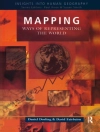This book surveys the historical development, current problems and likely prospects for Eastern Mediterranean port cities, providing contributions from scholars from various disciplines, such as archaeologists, historians, economists, urban planners and architects. By studying the city of Mersin and the surrounding area, it offers insights into the changing nature of Eastern Mediterranean port cities.
The first part of the book discusses the approaches to the Mediterranean World, from the late prehistory to the present, and questions the implications of the values inherited from the past for a sustainable future. The second part then examines the social structure of Eastern Mediterranean port cities presenting an in-depth study of different ethnic groups and communities. In the third part the changing physical structure of these cities is elucidated from the perspectives of archaeology, architecture, and urban planning. The last part focuses on urbanmemory through a detailed study based on live recordings of original accounts by the local people.
The book benefits prospective researchers in the field of Mediterranean studies, archaeology, history, economic history, architecture and urban planning.
สารบัญ
Introduction.- The Mediterranean Idea: From the Roman Mare Nostrum to the Book of the Sea by Naḥum Slouschz (1948).- Mediterranean as a Supra-Regional Interaction Sphere during Late Prehistory An Overview on Problems and Prospects.- Settlements in the Hellenistic Period in Cilicia.- Anthroscapes: A Robust Basis for Mapping Land Quality and Sustainable Land Use Patterns.- Visible / Invisible: Sanctity, History and Topography in Tarsus.- Maronites in Mersin Through its Process of Becoming an Important Port City (The 19th and the 20th Century).- The Greek-Orthodox Community of Mersin (mid-19th century to 1921).- Where Have All the Egyptian Fellahin Gone? Labor in Mersin and Çukurova (Second Half of the 19th Century).- Why did the German Levantine Cotton Company Settle in Cilicia?.- The Port of Mersin from the Nineteenth Century to the Twentieth Century.- Entrepreneurial Spirit and Modernization of a Port City: The Case of Mersin.- Adana-Mersin Railway Station Buildings:v A Cross-sectionof the 19th Century Ottoman Architecture.- Changes to urban form in Eastern Mediterranean port cities: Formation and transformation of the Çamlıbel neighborhood in Mersin.- The Denizens’ Turn.
เกี่ยวกับผู้แต่ง
Dr. Filiz Yenişehiroğlu is a faculty member at the Department of Art History of Koç University. She also serves as director of Vehbi Koç Ankara Studies Research and Application Center in Ankara, Turkey. Her areas of specialty are Ottoman Art, Ottoman architecture, Ottoman ceramic art and popular culture.
Dr. Eyüp Özveren is Professor at the Department of Economics, Faculty of Economics and Administrative Sciences (FEAS), Middle East Technical University (METU), Ankara, Turkey. His areas of specialty are economic history, history of economic thought, institutional economics, Mediterranean studies and political economy.
Dr. Tülin Selvi Ünlü is researcher at Mersin University-Center for Mediterranean Urban Studies, Turkey. Her areas of specialty are Eastern Mediterranean port cities and their urban development, urban history, urban memory and oral history.












